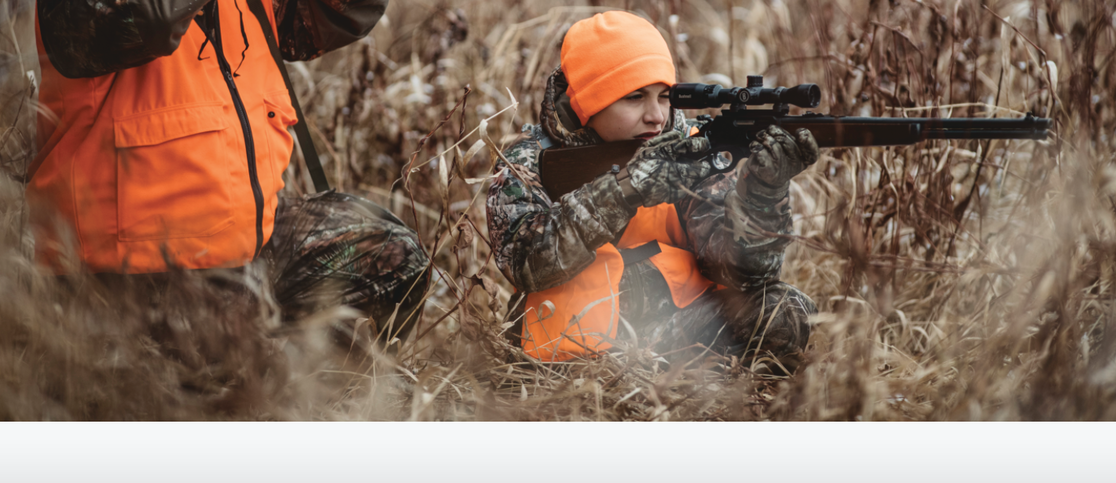Picture this:
You’re out on a hunt when all a sudden, you spot motion in the distance.
Could it be the buck you’ve been tracking? You lift your binoculars for a careful look. After several adjustments, you realize it’s the 8-pointer, alive, and well. You stay as quiet as possible, lift your rifle, and adjust your AR-15 scope. And adjust some more. And you still can’t see it very well.
There’s a black ring around the field of view, and it’s hard to get clear for a shot. You grunt out of frustration, startle the buck, and it disappears before you can take a shot.
What just happened?
A Little Thing Called Eye Relief
The problem you just read about is known as eye relief.
Eye relief is the distance between the lens of your binoculars or scope to the tip of your eye. When viewing a scene through any lens with incorrect eye relief distance, the picture you see will be distorted, either with a fuzzy image or with a black ring around the field of view.
When your rifle scope is mounted with accurate eye relief, your field of view through the scope should be bright and full.
Why Is Eye Relief Important?
Many shooters grab their gun, mount their scope, and head out for a day of target practice without a second thought.
A few come back with bandages over their eyebrow.
Why?
Because they didn’t get their eye relief right. Spending some time getting acquainted with proper eye relief at the outset will save time and lower your risk for “scope eye.”
Scope eye occurs when your scope is mounted in such a way that you have to hunch up close for a clear field of view. If you get to close to your scope when using a powerful rifle, the recoil will cause your scope to smack into your eye.
In short:
If you want to avoid looking like you just finished a boxing match, then get adequate eye relief.
How Much Eye Relief Do I Need?
There are two types of eye relief:
- Standard Eye Relief
- Long Eye Relief
Here are the benefits of each:
Standard Eye Relief
Measurement: 3.5 to 4 inches — common on centerfire rifles.
Shooting type: Ideal for long-range shooting.
Shooting Area: Best for open, flat areas.
Shooting Caliber: Medium caliber is ideal.
Upside: Standard eye relief scopes offer the highest magnification available.
Downside: The field of view is not as large as the field of view on long eye relief scopes.
Long Eye Relief
Measurement: Above 4.5 inches
Shooting type: Preferred for shorter range shooting and where maximum magnification is not desired.
Shooting Area: Areas with a lot of uneven terrain, hills, brush, and trees.
Shooting Caliber: Ideal for high caliber rifles.
Upside: The broader field of view allows the shooter to identify a target and sight it quickly.
Downside: Smaller magnification capabilities when compared to standard eye relief options.
Practical Application
Now that you know the difference between standard and long eye relief, let’s look at a few practical applications.
Handguns
If you’re planning to hunt with a handgun, long eye relief is an absolute must. The long eye relief for handgun mounted scopes will be measured in feet instead of inches due to the necessary length. Magnification capabilities are limited to 1x and 2x for a full, clear picture.
Shotguns
If you use a shotgun for hunting more than fowl, you’ll want a standard scope that has an eye relief measuring at least 3.5 inches. Scopes equipped for recoil associated with high-powered rifles will also do the trick.
Rifles
If you’re hunting on flat terrain, a scope with standard eye relief will be plenty. If shooting in mountainous areas or a hilly region, you’ll want a long eye relief scope. The reason? Long eye relief scopes prove especially useful when aiming uphill. But keep in mind: eye relief naturally shortens when shooting upward. Starting with long eye relief will provide sufficient space for recoil, ensuring the shooter’s safety.
Wrapping it Up
Many hunters spend most of their time on weapons, choosing the stock, the trigger, the ammunition.
But few spend any time figuring out the correct eye relief. To keep things simple, be sure to purchase a scope that has at least 3.5 inches of eye relief.
If your rifle has heavy recoil, go for even more eye relief.
That said, if you’re looking for state-of-the-art optics that have excellent eye relief, check out Bushnell’s full range of high quality riflescopes.
Author Bio:
Richard Douglas is a firearms expert and educator. His work has appeared on large gun publications like The National Interest, Daily Caller, American Shooting Journal, and more. In his free time, he reviews optics on his Scopes Field blog

